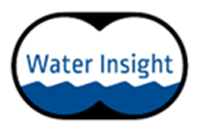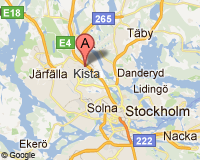CYANOBLOOM
Advanced risk management tool for early detection and identification of toxic algal blooms
Project Summary
Cyanobacteria are microscopic organisms found naturally in all types of water. In warm, nutrient-rich environments (high in phosphorus and nitrogen), cyanobacteria can multiply rapidly, creating blooms that can produce toxins, cyanotoxins, which affect water quality and can be harmful to humans, animals and the environment.
Currently, detection methods for cyanobacterial blooms are mainly based on in-situ sample collection and laboratory analysis, which limits the early detection of these blooms due to insufficient sampling frequency. Other initiatives exist to support decision-making in drinking water management, such as satellite remote sensing, fluorescence-based probes and drones, however, these tools need to be equipped with advanced imaging solutions (multispectral, hyperspectral) to achieve the necessary precision. In addition, they need to be complemented by analytical methods to determine the actual toxicity of the blooms. The WHO recommends the introduction of molecular methods for monitoring toxigenic cyanobacteria.
The CYANOBLOOM project aims to demonstrate a solution for early detection of toxic cyanobacteria blooms in public water supply reservoirs through a combination of remote monitoring (i.e by means of data retrieved from public and private satellites) and on-site measurements (i.e hyperspectral field measurements with genetic analysis of collected samples). As a result, the probability of timely identification of a bloom will increase from the current 0.82-1.11% to 90%. The new solution will be tested in four water reservoirs located in ES (2), SE and NL.
Project description
Cyanobacteria can form blooms in fresh, marine and brackish waters. They are especially prolific in calm water bodies such as lakes, ponds, weirs and reservoirs, or slow-flowing rivers, due to ideal growth conditions because of the long residence times of the water. These blooms can cause serious problems for the environment, water quality and public health. In addition, some cyanobacterial blooms, the so-called cyano-harmful algal blooms (cyanoHABs) produce toxins which can induce serious diseases such as gastrointestinal disorders, dermatitis, liver failure and even mortality in animals and humans.
Early detection and warning of cyanoHABs becomes of vital importance to effectively mitigate their effects. In this regard, the CYANOBLOOM project will provide an innovative approach that will combine optical methods to detect the occurrence of bloom as early as possible with the possibility to act earlier than with traditional methods. Therefore, the overall objective of CYANOBLOOM is to develop an early-monitoring solution for cyanobacterial blooms, overcoming the limitations of the current monitoring solutions.
CYANOBLOOM will provide an efficient process to ensure the supply of water services (drinking water intake, recreational water) that will guarantee the highest safety levels with the 80-90% improvement in detection time and 10-20% improvement in toxic cyanobacteria bloom.
The CYANOBLOOM project solutions will be demonstrated at the following locations:
- Södra Bergundasjön and Norra Bergundasjön Lakes (Växjö, Sweden). Södra Bergundasjön and Norra Bergundasjön lakes are located in central Växjö, Sweden and have for long been characterized by eutrophication problems in the form of massive blue-green algae blooms, nutrient leakage from the bottom, oxygen-depleted bottoms and in some cases fish deaths. Although extensive restoration efforts have significantly improved the nutritional status of the lakes so that they do not return to a hypertrophic state over time, additional restoration efforts are required.
- Lake Westeinderplassen (The Netherlands). The lake is used for commercial boating and recreation, and often suffers from blooms of the toxic cyanobacterium Microcystis. Although regular monitoring is carried out according to the Dutch "Blauwalgenprotocol", these methods are expensive and the results are often available too late, resulting in the lake often being closed for much of the summer season, leading to losses for the tourism sector. Timely information on blooms might allow for mitigation actions to reduce the effects of cyanoHABs.
- Urrunaga reservoir (Spain). This reservoir is the second largest in the Basque Country. It is a recreational reservoir where, during the summer, the concentration of Chlorophyll increases due to the increase of people who visit the reservoir to enjoy the different aquatic activities that can be practised such as regattas, water skiing, paddle surfing or canoeing. However, so far this reservoir lacks regular controls that can determine the quality of the water.
- Bellús Water Consortium of Júcar (Spain). The Bellús reservoir is known for the low quality of its waters, due to the discharge of effluents from industrial areas. The only activity carried out in the reservoir is recreational fishing, since its main use is irrigation and flood prevention. To date, there are no periodic controls that are representative of the water quality.

Expected results
The CYANOBLOOM project will design and demonstrate an innovative and effective system for the early detection of cyanobacterial blooms in public water supply reservoirs. As a result, a comprehensive risk management tool for the early identification of HABs in water bodies will be developed that will ensure the highest safety levels. This tool will support water management authorities allowing them to design more effective actions to counteract cyanobacterial bloom events.
The main expected results of the CYANOBLOOM Project are the following:
- Increase the probability of timely detecting and warning of a bloom at the monitoring site by 80-90% and reduce the chance of missing a toxic cyanobacterial bloom at the monitoring site to 10%-20%.
- Increase the number of water sites being monitored by a factor of 10.
- Increase data collected from water bodies from VHR, hyperspectral and Copernicus satellites.
- Increase the probability of detecting bloom initiation at the monitoring site which will reduce exposure time to toxic blooms by 80%.
- Reduce the occurrence of water supply outages by 10%.
- Reduce health problems by 85-90%.
- Reduce infection cases and medical visits, which will also lead to savings for the health system up to 15,000€ per case.
- Reduce costs of monitoring and mitigation measures by providing a cost-effective solution, saving large efforts and investments to restore water sites.
- Reduce economic losses to the commercial fishery, recreational and tourism by increasing the chances of early detection of cyanoHABs by 80%-90%.
- Job creation.

Participants
The CYANOBLOOM consortium is formed by a multidisciplinary team of 6 participants from Spain, the Netherlands, Germany, and Sweden. CYANOBLOOM counts 5 SMEs (ANBIOTEK, SISTEMAS GENOMICOS, WATER INSIGHT, BROCKMANN CONSULT and BROCKMANN GEOMATICS) and the Basque Environmental Cluster, ACLIMA.
The project coordinator is ANBIOTEK, a Spanish SME that is one of the leading natural water quality monitoring services companies of the Basque country. Its team is formed by highly specialised professionals, who have participated in multiple projects related to the fields of surveillance and management of aquatic ecosystems. ANBIOTEK experience also extends to the field of remote sensing of inland waters and developing of an early-stage prediction model for the quantification of algal photosynthetic pigments.
SISTEMAS GENOMICOS is a Spanish SME specialised in genetic sequencing with almost two decades of experience in the field of molecular biology and genetics, with specialisation in techniques aimed at the fields of healthcare, food and agriculture and research. Sistemas Genómicos is the genomics and genetics division of the Grupo Synlab, a biomedical group with over 40 years of experience in precision diagnosis using specialisation and bringing together two cutting-edge areas: diagnostic imaging and genetic diagnosis. Sistemas Genómicos has a broad background in cutting-edge research and studies, and actively collaborates on numerous national and international R+D+i projects.
WATER INSIGHT is a Dutch SME expert in innovative high water quality monitoring, both in situ and remote based on satellite data. WATER INSIGHT is the developer of the WISPstation, the monitoring instrument used for this project and the WISPcloud, the database that collects the data from the monitoring locations. WI also has ample experience in satellite validation activities using both in situ spectral data and more traditional ground truth data.
BROCKMANN CONSULT (BC) is a German SME that provides software and geoinformation services focusing on Earth Observation (EO) data and products. Its services are based on water quality products for inland and coastal waters as well as coastal ecosystems. BC runs several processing infrastructures on different cloud systems and its software solutions provide tools and interfaces for users to work with EO data in many different applications.
BROCKMANN GEOMATICS (BG) is a Swedish SME of geoinformatics consultants that offers services comprising information products and methodological solutions based on remote sensing and GIS technology. Two of the main applications at BG are wetland and water quality monitoring. BG runs operation services and framework agreements with authorities and end-users that are responsible for local, regional and national environmental monitoring.
ACLIMA is the Basque Environmental Cluster that is under the Basque Government Industry Policy Action Plan. Public and private entities are involved in ACLIMA. Currently, there are 128 members: 98 private companies, 4 universities, 6 research centers, and representatives from the regional government, regional councils, and main municipalities. This cluster is meant to promote cooperation to develop new business opportunities and increase innovation in the environmental sector. This entity has become the main hub for interaction within the Basque environmental sector at a national level and collaborates actively with other Spanish demonstration and innovation transregional cooperation projects.
Info
- Duration: 2023 - 2026
- This LIFE CYANOBLOOM project has received funding from the European Union’s LIFE programme under Grant Agreement No 101114366.
- Website: Under construction
- Contact: Petra Philipson, petra.philipson@brockmann-geomatics.se






